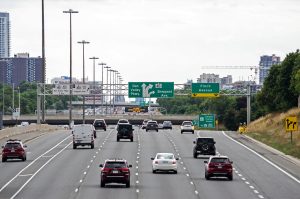 To the professional driver, the easiest space to manage around your vehicle is the space directly in front of your vehicle.
To the professional driver, the easiest space to manage around your vehicle is the space directly in front of your vehicle.
When driving on dry roads, the recommended following distance is four seconds behind the vehicle in front of you. This provides the driver with sufficient time for perception (seeing the brake lights) and reaction (pivoting foot from gas to brake).
On average it takes a second and a half for the brain to register seeing the brake lights ahead and to when you move your foot to the brake. Only after this point is when the vehicle will start to slow down. This will leave approximately two and a half seconds for margin of error. If you add any distractions like adjusting ventilation, making a phone call or children in the backseat, that margin of error is decreased.
Factors to consider when bringing your vehicle to a complete stop include weight of the vehicle, the speed the vehicle is travelling, the condition of the brakes, and the road conditions. When driving in adverse conditions, drivers will need to increase the following distance to create more space cushion to slow down and stop when necessary.
If a driver is travelling 100 km/h on dry roads, with a four second following distance, that provides a total space cushion of 107 metres.
It is important to slow down when driving in adverse road conditions as traction is reduced. If a driver is travelling during a snow event, drivers need to slow down to accommodate the loss of traction that will occur on the snow covered roads.
If the driver slows down to 50 km/h, with an eight second following distance, the space cushion of 107 metres is still maintained. The same precautions should be used when driving on icy roads and leaving a following distance of 15 seconds.
A driver should increase the following distance and maintain a space cushion to provide drivers with time to react to situations ahead.
